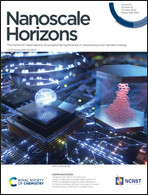Four levels of in-sensor computing in bionic olfaction: from discrete components to multi-modal integrations
Abstract
Sensing and computing are two important ways in which humans attempt to perceive and understand the analog world through digital devices. Analog-to-digital converters (ADCs) discretize analog signals while the data bus transmits digital data between the components of a computer. With the increase in sensor nodes and the application of deep neural networks, the energy and time consumption limit the increment of data throughput. In-sensor computing is a computing paradigm that integrates sensing, storage, and processing in one device without ADCs and data transfer. According to the integration degree, herein, we summarize four levels of in-sensor computing in the field of artificial olfactory. In the first level, we show that different functions are conducted by using discrete components. Next, the data conversion and transfer are exempt within the in-memory computing architecture with necessary data encoding. Subsequently, in-sensor computing is integrated into a single device. Finally, multi-modal in-sensor computing is proposed to improve the quality and reliability of the classification results. At the end of this minireview, we provide an outlook on the use of metal nanoparticle devices to achieve such in-sensor computing for bionic olfaction.

- This article is part of the themed collections: Celebrating the 20th anniversary of the National Center for Nanoscience and Technology (NCNST) and Recent Review Articles


 Please wait while we load your content...
Please wait while we load your content...